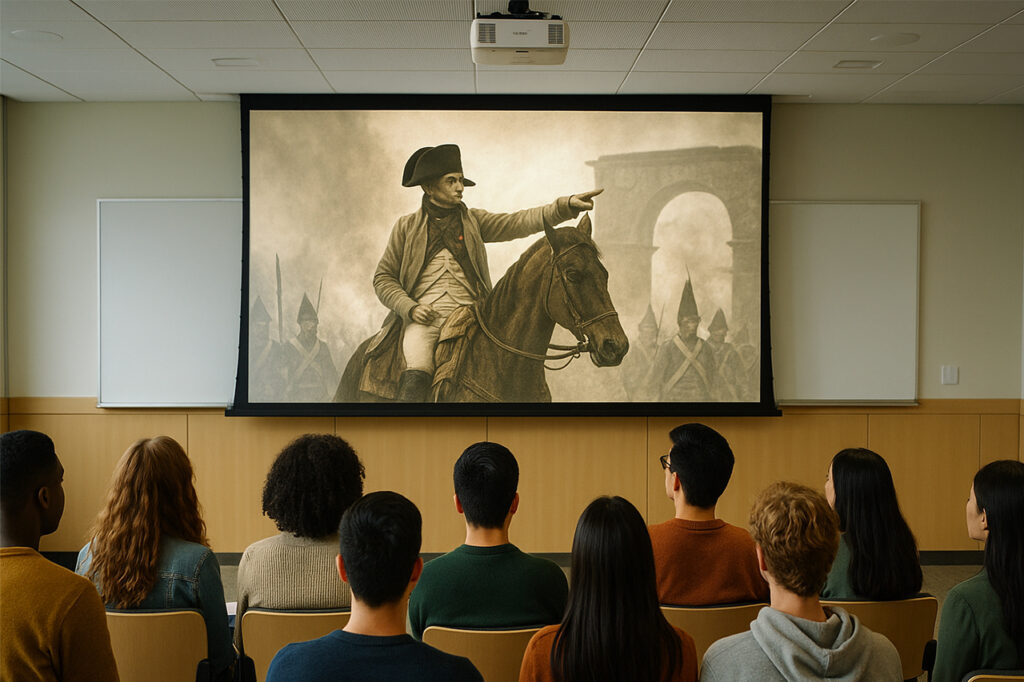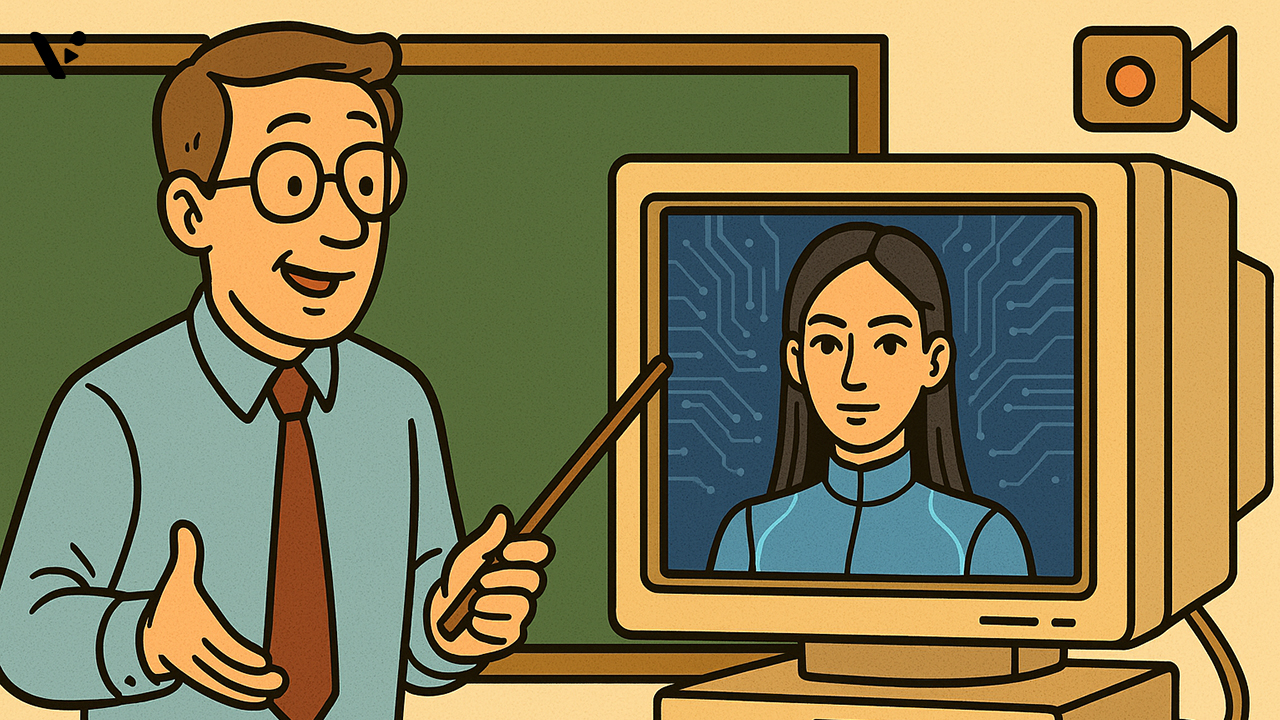What are AI avatars?
Let’s start at the beginning. What is an AI avatar, exactly? In simple terms, it’s a digital character that looks and speaks like a real human. You can program it to say anything you want. You type in the script, choose the avatar, and generate the video. That’s it. No cameras. No lighting setups. No worrying about what you’re wearing that day.
AI avatars are built using advanced AI models trained to replicate realistic facial movements, speech patterns, and gestures. But you don’t need to understand any of that. Just know this: they are digital humans that communicate for you on video.
Should teachers even use video?

Before diving deeper, let’s ask an honest question: should educators use video at all?
The answer is yes. Video helps students in multiple ways. First, it makes concepts easier to understand. Students can watch videos anytime, pause, rewind, and take notes at their own pace. Second, it improves engagement. Learners are used to consuming content visually on social media sites like YouTube and TikTok. If you show up where their attention already lives, you win their focus.
Third, video builds your authority and presence. Even if you’re camera-shy, showing up on video (or using an avatar) gives students the sense that you are there with them, explaining ideas step by step.
If you need some inspiration for types of videos to make, here are the types of videos that work best for the classroom.
Using AI avatars in your teaching videos

Here is where it gets interesting. Imagine you want to record a lecture on the circulatory system. You write out your script, upload it to an AI avatar platform, select your avatar, and within minutes, you have a polished, professional video ready to share. No re-takes. No wasted hours.
Here are practical ways to integrate AI avatars into your teaching:
Create microlearning videos
Break down long lessons into short, focused microlearning videos. AI avatars make this easy because you don’t need to record dozens of takes in one sitting. Script out your five-minute chunks and generate them individually.
Explain assignments clearly
Instead of typing out complex assignment instructions, create a short video with your AI avatar explaining the task. Students can watch and rewatch to ensure they fully understand what is required.
Generate announcements
Use avatars to record weekly or daily announcements for your class. This keeps students updated while reducing repetitive explanations in live sessions.
Personalize feedback
Some platforms allow batch video generation using AI avatars. You can write personalized scripts for each student’s feedback and generate videos in bulk. Imagine how appreciated students feel seeing a video with their name and personalized comments.
Best practices for educators using AI avatars
Using AI avatars is straightforward, but to maximize their impact, keep these tips in mind:
Write conversational scripts
Don’t write as if you’re typing an academic paper. Write how you would speak in class. Use short sentences. Ask rhetorical questions to keep attention high.
Choose natural-looking avatars
Select avatars that reflect warmth, clarity, and professionalism. Avoid avatars that appear too robotic. The more natural they look, the more comfortable students feel watching them.
Maintain consistent branding
Always use the same avatar, backdrop style, and tone across your videos. Consistency builds recognition and authority.
Use visual aids and overlays
Some AI avatar tools allow you to insert images, slides, or visual overlays into your videos. Use these strategically to illustrate your points, especially for STEM and data-heavy subjects.
Keep videos short and focused
Attention spans are limited. Microlearning works because students can grasp a single concept quickly before moving to the next. Aim for 3 to 7-minute videos wherever possible.
Test and iterate
Ask students for feedback. Find out if the avatar delivery feels engaging or if you need to adjust your script style or visual presentation.
Use cases for AI avatars in education
Let’s look at specific ways educators are using AI avatars:
Language instruction
Language teachers create daily speaking practice videos using avatars. For example, French instructors record daily vocabulary practice with pronunciation guidance, so students can listen and repeat at home.
STEM explanations
Math and science teachers simplify complex formulas or physics principles by creating short avatar-led explainers with supporting diagrams.
Course welcome videos
Instead of writing out a welcome email, educators use avatars to create warm welcome videos to introduce themselves and their teaching style at the start of a course.
Onboarding new students
Universities use AI avatars to onboard students with step-by-step orientation videos covering registration, online platforms, library resources, and academic support services.
Accessibility content
AI avatars can speak multiple languages or offer sign language versions (depending on the tool), increasing accessibility for diverse learners.
Continuous professional development
Teachers use AI avatars to create quick training refreshers or explainer videos for fellow staff on policies, software tools, or procedural updates.
Parent communication
Some schools use AI avatars to record announcements for parents. This makes communication efficient, especially for busy administrators or principals.
Bringing AI avatars into your teaching practice with Visla
Let’s be real: everything we talked about in this blog? AI avatars can help with all of it. When you’re outlining a course, for example, you don’t have to stand in front of a camera every time. Just generate a consistent avatar that appears in each video, so your lessons feel connected and cohesive. Your students stay focused on the content, not distracted by constant changes in tone or appearance. It’s like having a digital teaching assistant who never needs a break.
Need your content in multiple languages? Your avatar can speak them. You just choose the voice and let Visla handle the rest. Whether you’re teaching in English and want subtitles in Spanish or delivering full Mandarin voiceovers, the avatar stays polished and natural. No extra filming, no complex editing. You’re now able to reach a broader group of learners without redoing the work.
And when it comes to editing and customizing each lesson, AI avatars make things smoother. Want to swap a clip, adjust a voice line, or update a script? No reshoots needed. Your avatar updates in minutes. So every time you revise a lesson, respond to student feedback, or tweak your tone for a new module, Visla’s avatars flex with you. It’s fast, personal, and professional, all in one.
FAQ
The biggest benefit is time savings. You can create polished videos without filming yourself, setting up equipment, or spending hours editing. This frees up time to focus on lesson planning, marking, and student support while still delivering high-quality video content.
No, AI avatars do not replace teachers. They are tools to enhance your teaching. Think of them as digital assistants that communicate your lessons when you cannot be on camera. You still guide learning, set tasks, and mentor your students.
Write scripts as if you’re speaking directly to students. Keep videos short, use simple language, and insert rhetorical questions to maintain attention. If your platform allows it, add visuals, slides, or annotations to bring lessons to life.
Most AI avatar tools are built to be user-friendly. You type your script, choose an avatar, and generate the video with a few clicks. You don’t need video editing experience or technical knowledge to start creating professional videos quickly.
Yes. Some platforms allow you to generate videos in bulk with personalized scripts. For example, you can write feedback addressing each student by name and create multiple videos at once. This makes students feel seen and supported without taking up your entire day.

